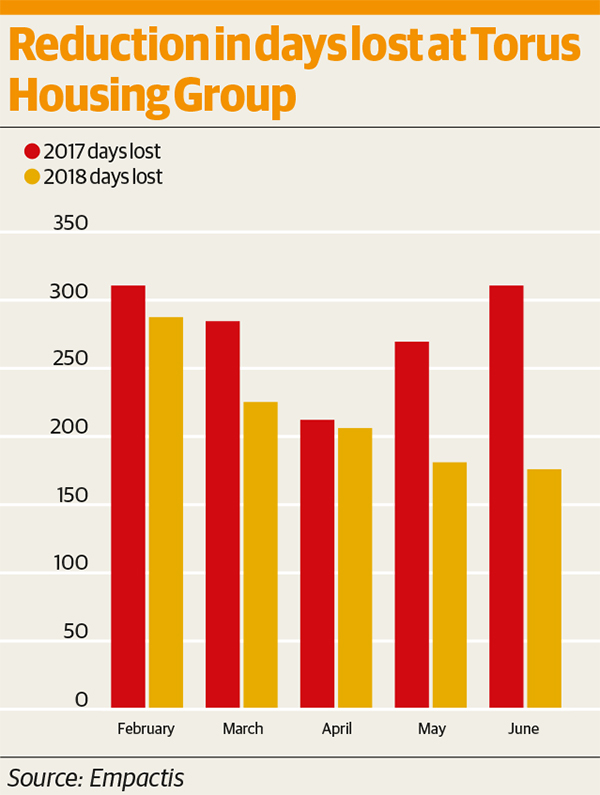Improvement through data
Keith Williams explains why capturing information about your workforce is the most efficient way to improve health, well-being and productivity. Picture by Getty
In association with:

What advice would you give to organisations that are trying to develop a higher performing, healthier and more engaged workforce?
I would ask them to stand in the shoes of a line manager, or employee, and take a hard look at what (if any) technology solutions the organisation has invested in, and then ask a simple question: “Are the solutions aligned with achieving these goals?”
Historically, employee processes relating to absence management, HR case management, employee health management and managing policy compliance have been manual and dealt with independently of each other. As a result, they’re not ‘joined up’ or fit for purpose.
Automating the ‘administrative’ tasks associated with employee health and well-being processes, and having access to real-time data are vital to achieving a higher performing, healthier and more engaged workforce.
Why should organisations embrace technology in this area?
Because it works.
Staff are the biggest asset an organisation has, so it makes sense that the capturing and reporting of information about the health and well-being of employees should be automated and in real-time. This reflects their importance to the organisation. The prizes for getting this right are enormous.
At the simplest level, we are talking about having a more engaged, motivated and healthier workforce. This means more people at work more often, which benefits all stakeholders including employees, managers, the business and its customers.
What are the consistent issues that you see across organisations that this type of technology helps address?
Many organisations are still trying to manage critical employee health and well-being processes (absence, HR cases and health and safety) using a range of manual processes.
At one end of the spectrum I see spreadsheets being utilised to consolidate data across organisations and at the other end manually recorded data being input into HR systems, HR case management systems and/or payroll systems.
These approaches are out of date and light years away from what managers really need to stand any chance of doing their job in an efficient and effective manner. Any process that, at its core, requires an employee or manager to manually capture and input data is a potential failure point. Any resultant management information created from this is therefore also likely to contain errors. Consequently, any decisions taken based on such data may not be the correct ones.
What are the management trends and goals that you see across organisations?
I see two common management trends that are interlinked: the search for higher productivity and the need for an effective talent management programme. I also see management teams embracing technology to help shape and guide the running of their organisations. Making decisions based on hard data rather than gut feel has always been a goal of management teams in my experience.
Having an effective absence management process is a compulsory ingredient to achieving higher productivity. We naturally (rightly) associate absence levels with a genuinely sick workforce. However, high absence levels can also be an indicator of a highly demotivated and disengaged workforce. To transition to a higher performing, healthier and more engaged workforce requires accurate data, and it means organisations must have policies and processes that monitor engagement levels between managers and employees. Ultimately, a more holistic approach is required at the outset.
Traditional approaches to managing absence are hugely inefficient, prone to human error and prone to manipulation from start to finish. The most important part, the ‘engagement’ piece, is often missing entirely. Ensuring there are positive engagement opportunities between managers and employees plays a huge part in transitioning to become a truly high-performing workforce.
Managers need to be provided with modern, fit-for-purpose, automated processes that give accurate, real-time data that not only serves to effectively manage absence episodes, but also provides management information about the level of engagement across the organisation in relation to every employee health event.
Can you provide some examples of how the data your system captures has really helped improve the health and well-being of an organisation’s employees?
One of our customers is Torus Housing Group, based in the North West of England. When we started working with Torus the business had identified that the in-house contractor (IHC) department had the worst musculoskeletal absence statistics in the organisation and the poorest compliance engagement scores. This was due to the nature of the work the operatives are required to do and an ageing workforce. Haydn Hansford, the managing director, used the real-time data provided by our software to change the culture around absence.
In the period February to June 2018, the IHC department saw a sustained month-on-month reduction in working days lost because of absence, which represented a 22% reduction in days lost from the same period in the prior year.
You can see the change in absence statistics by comparing days lost in February-June 2017 and 2018 (when a fast-track physiotherapy service was implemented) in the graph (above).
The second example is where Torus used the data captured in relation to ‘absence reasons’ within IHC to set about a programme of proactive fast-track physiotherapy appointments. For the first time, Torus had accurate, real-time visibility on the reasons for employee absences, and the data showed that days lost due to musculoskeletal reasons were very high. Having this data enabled them to really help improve the health and well-being of their employees.
The examples above prove that if you give a strong management team accurate, real-time data they can use it to really improve the health and well-being of their employees.
Biography
Keith Williams joined Empactis as commercial director in July 2016. He is a chartered accountant with more than 15 years of corporate finance experience. He works with customers to help them analyse and interpret their data, and provides ongoing consulting input to support and deliver the governance, reporting and accountability requirements at monthly board meetings of the majority of Empactis’ larger customers.









